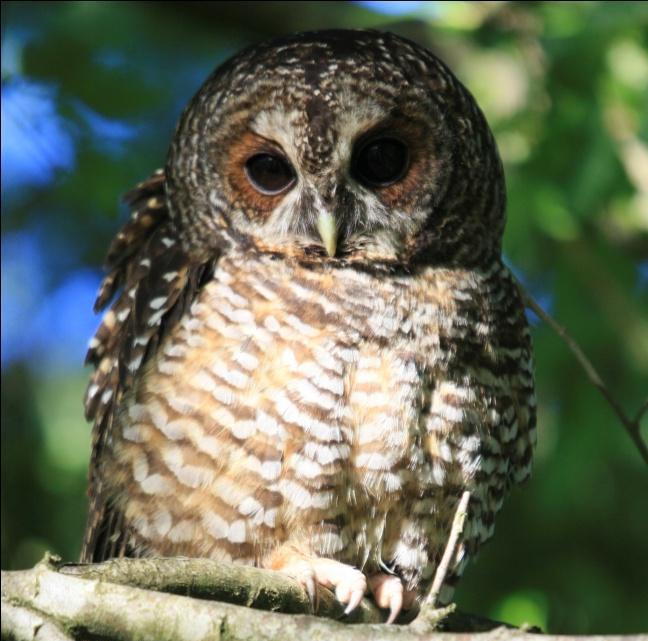José Tomás Ibarra
Other projects
28 Nov 2011
Endemic Owls and Woodpeckers from the Temperate Rainforests of South-America: Are they Reliable Indicators of Biodiversity for Sustainable Forest Management
In our project we are studying the ecology the cavity-nesting community and engaging local institutions and people in reducing the removal of habitat legacies (large decaying trees, snags and understorey) in Andean temperate forests, Chile.

Concón (Strix rufipes).
The increasing degradation and loss of the Biodiversity Hotspot "Chilean Winter Rainfall-Valdivian Forests" is affecting several species that depend on trees for their survival. Cavity-nesting animal communities exist within “nest webs” in forests where the abundance and diversity of species are determined by cavity availability, interspecific interactions and forest harvest practices. Cavity-nesters differ in their ability to obtain cavities: treerunners and woodpeckers (known as primary cavity-nesters) excavate their own cavities. Secondary cavity-nesters (including ducks, owls, parakeets, swallows, tapaculos) are unable to excavate cavities, and must reuse cavities excavated by primary cavity-nesters or created naturally through tree decay processes.
The overall goal of our project is to conduct a "nest web" analysis of the cavity-nesting community in temperate forests. This analysis explicitly outlines the links and interactions that must be understood to predict how the community will respond to habitat degradation and loss. Also, the "nest web" approach allows identifying keystone species and keystone interactions, helping to better anticipate the response of the community to forest management practices. Large decaying trees, snags and understorey are considered wasteful or indicative of unhealthy forest conditions to many forest managers in Chile. However, these “habitat legacies” are essential attributes of native forests, providing invaluable habitat for more than half of bird species (nearly 28 species) inhabiting Andean temperate forests. In our project we are studying cavity-nesting species at the community level, assessing nest-site requirements for vulnerable cavity-nesters and determining the potential presence of keystone species within the community. In our project, we are generating education material and we are working with local institutions, landowners, communities, schools and the Chilean Forestry Service, in order to reduce the removal of large decaying trees, snags and the understorey in forest-stands under management practices.